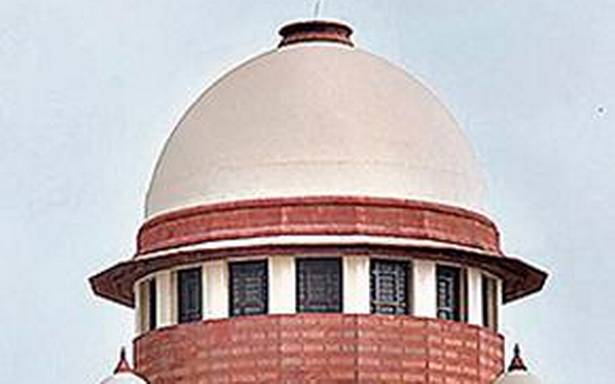‘In spite of the ordinance being struck down by the court, the Bill has been passed. There was no debate,’ says the Bench.
The Supreme Court on Monday challenged the government to produce material showing its reasons for introducing the Tribunal Reforms Bill of 2021, which abolishes nine appellate tribunals and revives provisions of an ordinance struck down by the Supreme Court, in the Parliament.
A three-judge Bench led by Chief Justice of India N.V. Ramana put the government on the dock about the complete absence of material justifying the Bill and also the lack of proper debate in the Parliament before it was made into law.
The Bill had replaced the Tribunals Reforms (Rationalisation and Conditions of Service) Ordinance, 2021. The provisions in the ordinance regarding conditions of service and tenure of Tribunal Members and Chairpersons were struck down by the Supreme Court. However, the same provisions re-appeared in the Tribunal Reforms Bill introduced by Finance Minister Nirmala Sitharaman on August 2 in the Lok Sabha.
The Bill was passed in the Lok Sabha by voice vote without a debate amid protests by the Opposition parties over the Pegasus controversy and other laws. The Rajya Sabha cleared the Bill on August 9.
“In spite of the ordinance being struck down by the court, the Bill has been passed. There was no debate. We did not see any. We are not questioning the wisdom of the Parliament… We are not saying anything about the Parliament’s power…. But at least we must know the reasons of the government in introducing the Bill… the Honourable Minister has but just one word… Please show us the debate which took place on the Bill. This is a serious issue,” Chief Justice Ramana questioned the government, represented by Solicitor General Tushar Mehta.
Mr. Mehta submitted that the Bill has matured into an Act. It was passed by the Parliament in its wisdom.
“Can you show us the records giving the reasons for which the Bill was placed in the Parliament? Can you show us what was discussed about the Bill before it was passed?” Chief Justice Ramana asked.
Chief Justice Ramana pointed out that despite the Supreme Court’s observations in an August 6 hearing and production of a note showing over 240 vacancies in key tribunals where thousands of cases were pending, not a single appointment had been made by the government in any of these tribunals till date.
Mr. Mehta insisted that some appointments had been made to the Central Administrative Tribunal. The rest of the appointments were “under process”.
‘Show us one appointment’
“Show us one appointment that you have made… Whenever we ask the Ministry about tribunal appointments, you say it is ‘under process’… If you want to make appointments, nothing prevents you from appointing… Till yesterday, we did not hear anything about any appointments to tribunals,” the CJI voiced the court’s scepticism.
The CJI repeated his question whether the government was moving towards closing down the tribunals… “We have a simple question for you… Are you planning to continue with the tribunals or close them down? Everything comes down to this question,” Chief Justice Ramana addressed the government.
“So tell us clearly, are you going to make appointments in the tribunals which are almost on the verge of being defunct?” Justice Surya Kant, on the Bench also comprising Justice Aniruddha Bose, asked the government.
The Bench referred to the July 14 judgment of the Supreme Court which observed that it was “aghast to note that some tribunals are on the verge of closure due to the absence of Members… Existence of large number of vacancies of Members and Chairpersons and the inordinate delay caused in filling them up has resulted in emasculation of the tribunals. The main reason for tribunalisation, which is to provide speedy justice, is not achieved as tribunals are wilting under the unbearable weight of the exploding docket”.
The Supreme Court scheduled the case for hearing on August 31, reminding the government that the pending litigation should not stop it from processing tribunal appointments.
Source: Read Full Article

